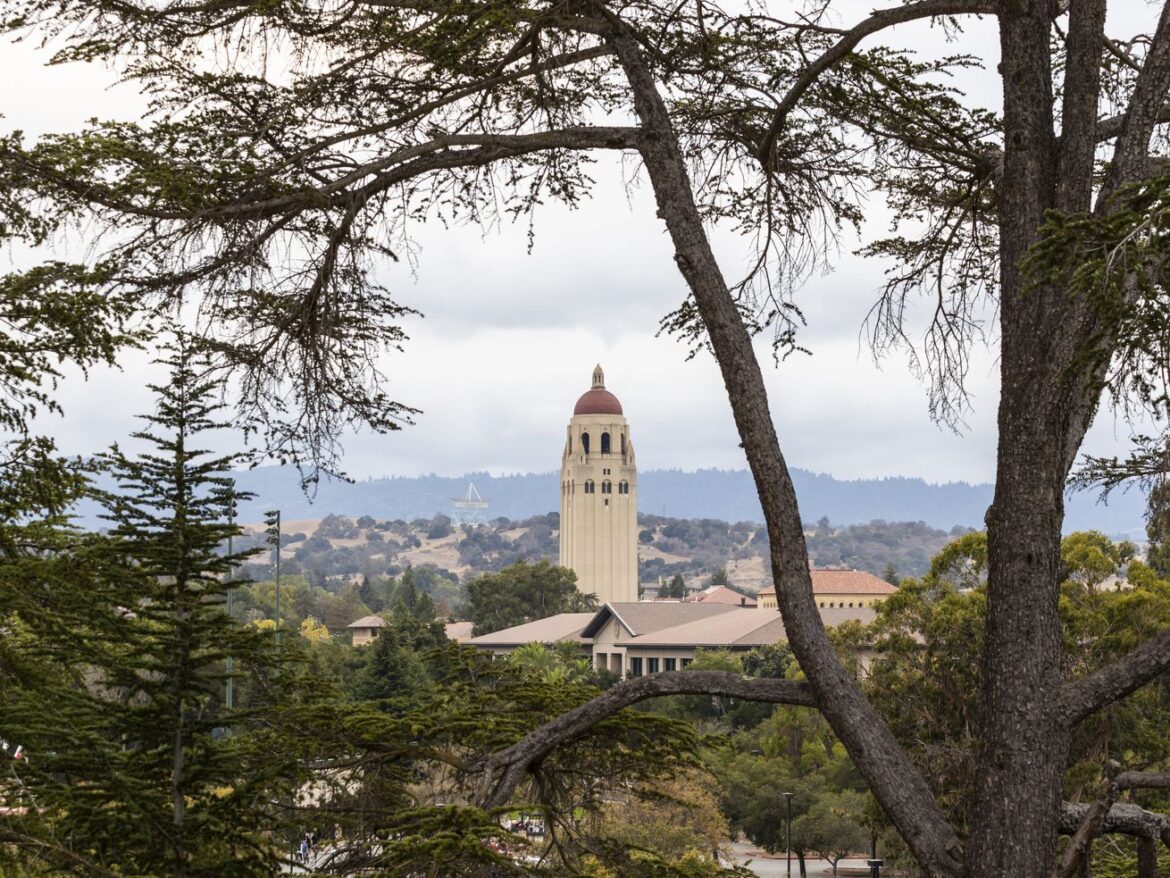From Stanford to Theranos, Malcolm Harris explains the weird, dark history of the mythic California city.
Silicon Valley has become one of the most mythical places in America. Whether you perceive it as a haven for high tech innovation or a place of obscene power and wealth, its influence is undeniable.
Since 1971, the tech industry has dominated the cities within California’s Santa Clara Valley, from Santa Rosa to Monterey to Sacramento. But there’s one city that’s the root of everything Silicon Valley stands for: Palo Alto. This small city — which makes up less than 15 percent of the Valley — is the home of Stanford University and many tech companies past and present, like Hewlett-Packard and Theranos. The history of this place isn’t just a regional story; it’s a global story. For better or worse, Palo Alto and the industry it spawned has remade our world in its image.
To understand just how much has been sacrificed to create the tech behemoth that Palo Alto is today, I spoke with journalist, critic, and author Malcolm Harris about his new book Palo Alto: A History of California, Capitalism, and the World for my podcast The Gray Area. Harris grew up in Palo Alto, and this book is a sweeping historical record that began as a memoir.
Below is an excerpt, edited for length and clarity. As always, there’s much more in the full podcast, so listen and follow The Gray Area on Apple Podcasts, Google Podcasts, Spotify, Stitcher, or wherever you find podcasts. New episodes drop every Monday and Thursday.
At the turn of the 20th century, Palo Alto became the home of three really important institutions: Stanford University, the military-industrial complex, and what became big tech. These three things are interdependent and related incestuously to one another.
Stanford was this small suburban private school in California, way far away from the core productive and intellectual strands in American life. The people leading Stanford, one of their thoughts at the beginning is: We’re going to improve the reputation of our school really quickly by training up people in specialties that are going to be very important for the world economy.
They say, we’re going to have one of the best mining engineering programs in the country. We’re going to pull people from throughout the West, and specialize in producing these mining engineers who are going to go all around the world, make a bunch of money, and make Stanford look really good.
This happens pretty much exactly the way it’s laid out, Herbert Hoover being the iconic example. That strategy is the same strategy they take into radio and avionics and electronics, which becomes Palo Alto’s core industry as the radio age turns to the silicon age.
Stanford has not just been this incubator of so many ideas that have come to shape our culture, it’s also this exquisite symbol of capitalist plunder because of the Native land it sits atop and how it has embedded itself in the power structure.
Leland Stanford was the robber baron’s robber baron. He was the founder of Stanford University, as well as the head of the railroad, the governor of California at one point, a senator at another. A real powerful guy in early California, and at the same time, a doofus.
A lot of his contemporaries, including his coworkers, think he’s a goof and they put him into this job — this frontman role at a time of really heavy class conflict — because he’s not doing the real work. He’s the frontman for this group of robber barons and becomes the most detested robber baron. Stanford University comes by this reputation for producing capitalist oligarchs honestly.
Why him? Is he just a bumpkin who’s in the right place at the right time?
Yeah, he is in the right place at the right time, but he’s also the right guy at the right place at the right time. He happens to be born near the Erie Canal, right when the Erie Canal opens. His family’s fortunes — they’re innkeepers in New York — go from just some innkeepers to innkeepers near the Erie Canal.
His life gets a lot better, and even though he screws up his first couple attempts at a career, he can still follow his brothers out to California on his parents’ dime. He takes part in the Gold Rush, not as a miner, but as someone who’s selling supplies, which was a great way to get rich in the Gold Rush — or at least rich enough to then invest in something else.
California is this great exemplar of American capitalism. It’s the site of the original Gold Rush, and it’s central to the formation of the railroads. There’s all this history of American wealth and exploitation. What distinguishes the Palo Alto chapter of capitalism from previous chapters?
There’s endless debate about when capitalism starts, like whether it’s the trading firms creating the global system, or it’s agriculture in England. But there’s not much argument about when capitalism becomes a world system, when it becomes a full planetary system. This happens at the end of the 19th century, with the incorporation of California, Japan, China, and Australia into capitalism. You have this last link of the chain that goes all the way around the globe, and now you have a capitalist world into the 20th century.
California as this last link of the chain has a special place in the history of capitalism, and as the last link in the chain, you become the first in the next phase. You have technology from the start as your solution to problems. You don’t have past regimes that are putting in their own solutions. You don’t have the remnants of feudalism so much.
You got maybe a little bit of Spanish colonialism, but mostly you’re talking about Anglo-American scientific, technological capitalist power from the beginning of this Anglo-American period. That means that even though California’s farms, for example, are in the hinterlands as far as global capitalism is concerned, they’re the most technologically advanced farms in the world.
Historically, the East Coast has been the center of capital in America — the Ivy League and Wall Street and DC. But as Silicon Valley grows throughout the mid- and later 20th century, it becomes wealthier and develops its own proto-neoliberal way of doing business.
It’s very much ahead of its time. It’s very anti-union. It relies on a super stratified workforce with high-skilled workers at the top and discardable workers at the bottom. It’s about offshoring as much as possible to reduce cost and boost productivity. Everything we associate with ruthless capitalism today is embodied in Silicon Valley’s way of doing business.
Those ways of doing business are just as important to the success of the region as the technologies themselves. It’s not that a lot of really smart technical people all hang out in California and that’s where all the good ideas come from, which is what Silicon Valley sells the world on.
There are plenty of inventors on the East Coast, and also research universities in the Midwest. California is able to pull a lot of people, partly because it is such a nice place to live and partly because they’re able to collect capital from all over the world — including the East Coast of the United States — and invest it into projects that might not have as much oversight as they would on the East Coast.
We’re all children of Silicon Valley now. This veers a bit into your previous book Kids These Days, but this drive to optimize our lives, to brand ourselves, the obsession with competition, the impulse to monetize everything, the fear of precarity that looms over so much of the middle class these days — that’s all the stuff of modern capitalism, and Silicon Valley is a steroid injected version of it.
It also happens to give us these tools, like the smartphone and social media, that keep us more plugged in as consumers and allow corporations and the state to surveil and manipulate and bombard us and our attention more than ever. It’s a hell of a cocktail.
Absolutely, and it’s important to think — outside of the technological development — what the particular characteristics of the Bay Area, and Palo Alto in specific, are. Before the gig economy, gig platforms, gig work existed, Santa Clara Valley was the center of temp work.
You ask a 20-something, what is temp work? They’ll say, uh, I don’t know what that is. What’s a temp? I have no idea. But you ask them what gig work is, and they know exactly what you’re talking about. It’s the same idea, innovating on the employment relation to make the employer less responsible over time.
Even before it was temp work, it was, undocumented immigrant work in basements. So much of the history of Silicon Valley is about the design, and not the labor and the execution.
What does that mean?
When we think about early Apple, we think about Steve Wozniak wiring the Apple I, and then we don’t worry about who wires any of the other Apples they make. It’s just wiring. The first one is the important part. The fact that the rest of them are wired by immigrant workers in basements throughout the Bay Area isn’t particularly relevant to the Apple story as far as people are concerned.
The industry took this as its ethos. You have the construction of what they called fabless semiconductor production, which is: They figured out you can offshore all the actual wiring and the production, and you can just do the design here.
That’s the ethos still. If you look at the back of an Apple product, it says designed in California, produced in China. Those parts are produced in a number of different places, none of which are California. Being able to separate the intellectual work, what they understood as the design or the “real” hard part, from the bodily labor is key to what we call the Palo Alto system. It’s the Palo Alto kind of capitalism that we don’t even think about.
You close the book by endorsing this call to return Stanford’s land in Palo Alto to the Indigenous tribe it was stolen from. You admit that’s almost certainly not going to happen, but you make a good case for why it should, beyond the obvious that it’s the right thing to do. Why do you think that would be such a symbolically potent move if it were ever to happen?
On one level, it’s a very, very, very pragmatic solution. How to return land to people who can responsibly take care of it is a crucial question for the United States right now. How to reconcile the crimes of federal colonialism with the people who still have ancestral claims to territory in North America is a crucial political question right now, and the book was written in the shadow of conflict around that.
I do think it’s realistic because the Stanford administration has 8,000 acres that have not been sold. They’ve held onto this territory because the covenant with the founders has been respected — unlike the covenant between ancestral people and their land, which has not been respected. They respected Stanford saying you can’t sell this land, so they’ve got tons of it that they’re not using.
They have acknowledged the Muwekma Ohlone as the ancestral title holders to the land. Stanford has a land acknowledgment that acknowledges that. They have returned remains from their collections to the Muwekma Ohlone. Even though the tribe is not federally recognized, they are a politically constituted organization and Stanford still recognizes them. For an organization that’s as closely tied to American settler colonial capitalism as Stanford to cede land, to say we’re not the best guardians of this land and in fact it isn’t rightfully ours — it isn’t even rightfully the United States’s — really opens a door to thinking about other land and other spaces and other claims in the United States.
In terms of the ecological effect of something like that, you think of Stanford putting tens of millions of dollars into a new climate school, or whatever ESG investments they’re making with their tens of billions of dollars in their endowment. They could do something that’s qualitatively more advanced than that by recognizing that they don’t have either the credentials or the title to care for this land, and that there are people who do. Do I see them doing that? I don’t know. Maybe they could. Maybe they show me that they have more flexibility than I believe they have.
If you and I are both pretty sure what you’re talking about here won’t happen because it would require capitalist actors to behave in ways that totally undercut the logic of capitalist action, I feel like that does leave us in a bit of a dead end and in a pretty cynical position. What is the argument for persisting?
One of the lessons I try to sketch out through the new left’s experience in the ’60s and ’70s is their experience with reform and revolution. You have people in Palo Alto who engaged in every kind of reformist activity. You have protests against a napalm manufacturer, where they’re laying their bodies down outside the factory. You’ve got petitions, you’ve got articles, you’ve got books — every sort of Gandhian nonviolent reform tactic that they could come up with to try and stop the Vietnam War, to stop American imperialism and environmental destruction, nuclear proliferation, things that are analogous to what we’re dealing with now.
What they found constantly is that even when they got into the room with the decision makers — they got right in front of them, they were able to present all their research about what’s going on in the world — they couldn’t change people’s minds. They came to understand that that’s because people’s minds aren’t there to be changed.
It’s not the job of agents of capital to use their personal discretion about what’s the most reasonable path. It’s to act out these impersonal injunctions about capitalist growth and accumulation. At a certain point you realize you’re not dealing with someone who has the freedom of reason. You’re dealing with someone who’s acting out a set of impersonal instructions, and at that point you can stop negotiating.
You have to look at the actual struggle. How are you going to stop what’s going on? Not just, how do you convince someone that it’s not the best idea? Because all you’re going to do is convince somebody to quit their job, and then someone else is going to come in and do the job that they just quit. But that doesn’t mean that the system is closed forever.
There’s this letter that I found, and it’s one of the few letters where Karl Marx talks about California. He’s writing in the 19th century. He’s like, wow, capitalism is really happening out there. He writes this letter and says, with California becoming capitalist and China, they’re really bridging the Pacific. The European revolution is going to get crushed. Is capitalism going to grow throughout the whole Pacific world? We’re not going to be able to build a counterforce in a way that’s able to defeat them before they’re able to use this territory.
We probably should have underlined that one a little bit more. Probably should have put that big, bold in some book because that’s totally what happened. This book is in some ways the history of what happened. It was a capitalist response to the European uprisings of the 19th century to colonize California to build this world system, but now they’re reaching the edge of that world system. They’re constantly finding limits. The final limit isn’t going to be something that they find on their own; it’s going to be something that is caused by a conflict.
Eventually they’re going to lose, and either they’re going to kill everything on the Earth or some set of social forces is going to stop them. Figuring out what that set of social forces is, how it constitutes itself, and in what way we struggle — history’s useful for that.



